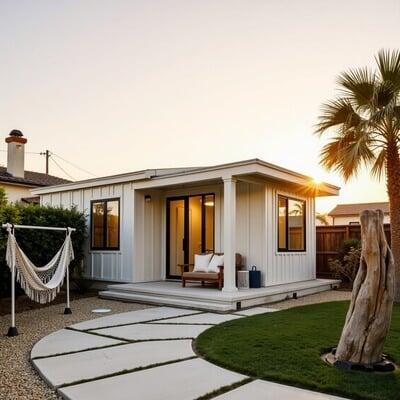| Table of Contents |
| 1. What is an ADU? |
2. Benefits of Building a Permitted ADU in the Bay Area |
| 3. Common Zoning Challenges When Applying for an ADU Permit in California |
| 4. Bay Area ADU Permit Requirements |
| 5. The Bay Area ADU Permit Process |
| 6. Common Pitfalls to Avoid |
| 7. FAQ |

What is an ADU?
✅ Benefits of Building a Permitted ADU in the Bay Area
- Building a permitted ADU brings long-term advantages—especially in high-demand housing markets like San Francisco, Oakland, San Jose, and surrounding counties:
Increase in Property Value: A legal ADU boosts home equity and resale potential.
Rental Income: Permitted ADUs can legally be rented out, offering steady income.
Multi-Generational Living: Ideal for aging parents, adult children, or live-in caregivers.
Legal Compliance: Avoid fines and red tape by ensuring your ADU meets local codes.
Sustainable Housing: Smaller units often reduce environmental impact and increase housing density responsibly.
📍 Bay Area ADU Permit Requirements: What You Need to Know
California state law(AB 68, SB 9, and others) has made it easier to build ADUs—but each Bay Area city or county may add local zoning requirements. Here’s a breakdown of key permit components:
1. Types of ADUs Allowed
Detached ADU – Separate from the main home.
Attached ADU – Shares a wall or roofline.
Garage/Basement Conversion
Junior ADU (JADU) – Smaller, often under 500 sq. ft., located within the main home.
2. Size & Height Limits
Up to 1,200 sq. ft. (state law minimum).
Local rules may limit size based on lot size or location.
Height restrictions range between 16–20 ft., depending on zoning and proximity to other structures.
3. Setback Requirements
4 ft. side and rear setbacks for detached ADUs.
Some cities (like San Jose or Berkeley) may offer flexible setbacks for conversions.
4. Parking Requirements
Generally, no additional parking is required if:
Within ½ mile of public transit
Part of a garage conversion
In historic or architecturally significant districts
5. Owner-Occupancy Rules
Post-2020 California law removed the owner-occupancy requirement through 2025. However, JADUs may still require owner residency.
Check Local Zoning Ordinances
Visit your city’s planning department website or consult an ADU professional.
Hire an Architect or Designer
Ensure your plans meet both state and local regulations.
Submit Building Permit Application
Include site plans, floor plans, elevation drawings, and energy compliance forms.
Permit Review
Cities must approve or deny within 60 days of a complete application.
Begin Construction
Once approved, your licensed contractor can start the build.
Inspections & Final Sign-Off
Schedule inspections as required (foundation, framing, final inspection, etc.).
❗ Common Pitfalls to Avoid
Skipping consultation with your city’s planning department.
Using unlicensed contractors.
Failing to comply with fire safety or utility upgrade requirements.
Not accounting for school, utility, and impact fees (some cities reduce or waive these for ADUs).

